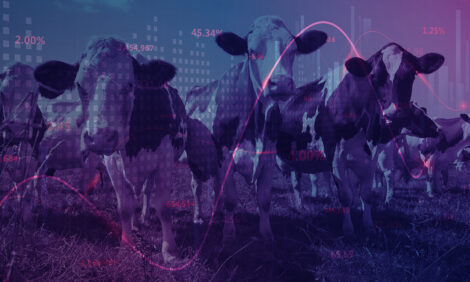



The Environmental and Economic Impact of Removing Productivity-Enhancing Technologies from U.S. Beef Production
What would happen if US beef farmers and ranchers no longer used productivity-enhancing technologies to raise beef cattle? This report from the Sustainable Beef Resource Centre looks at just that.Executive Summary
What would happen if U.S. beef farmers and ranchers no longer used productivity-enhancing technologies to raise beef cattle? To produce the same amount of beef they do today, every year:
- 10 million more cattle would be required in the U.S. beef herd
- 3 million more fed cattle would need to be harvested
- 81 million more tons of feed would be needed
- 17 million more acres of land would be needed for grazing and growing feed
- 138 billion more gallons of water would be required for producing feed and maintaining animals
- 18 million more metric tons of carbon dioxide equivalent (CO2eq) would be released in the United States alone
These effects would be equivalent to imposing an 8.2 percent tax on U.S. beef farmers and ranchers. This tax would reduce domestic beef production by 17 percent. If global demand for beef were maintained, within 15 years…
- These countries would increase beef exports:
- Canada — 36 percent increase
- Brazil — 24 percent increase
- Argentina — 11 percent increase
- Australia — 5 percent increase
- Brazil would lose 16.9 million acres of forest
- 3.1 billion more metric tons of CO2eq would be released into the atmosphere, primarily in these countries:
- 2.1 billion metric tons — Brazil
- 283 million metric tons — Canada
- 143 million metric tons — Argentina
- 139 million metric tons — Australia
Introduction and Objective
Thanks to the adoption of innovative management practices and technologies during the last 30 years, U.S.
beef farmers and ranchers have increased productivity dramatically.2 Much of this increase would disappear if
farmers and ranchers no longer used management practices and technologies that improve efficiency, making
it difficult to meet the world’s growing demand for animal protein.
Animal scientist Jude Capper, Ph.D., and economist Dermot Hayes, Ph.D., teamed up to publish a paper
to answer the question, “What would be the environmental and economic effects of removing productivityenhancing
technologies from the U.S. beef production system?”
Materials and Methods
A whole-system environmental and natural resource model was used to determine the resource use and
waste output from animals within all sectors of two U.S. beef-production systems. Both systems were identical
except in one critical area: the use of productivity-enhancing technologies.
In the Conventional System (CON), productivity-enhancing technologies were used at current market
adoption rates and where approved by the U.S. Food and Drug Administration (FDA) in accordance with label
instructions. Productivity-enhancing technologies included ionophores, steroid implants, melengestrol acetate
(MGA) and beta-adrenergic agonists.
Conversely, all productivity-enhancing technologies were excluded from the No-Technology System (NOT).
The whole-system model was built using the principles of life-cycle assessment (LCA) accounting. It
incorporated all relevant agricultural inputs (e.g., pasture land, cropland, fertilizers, pesticides, drinking water
for cattle, irrigation water, electricity, fuel), extending from the manufacture of cropping inputs to the arrival of
finished cattle at the processing plant. Animals within all sectors of beef production were considered in the
analysis, including inputs from the U.S. dairy herd in terms of calves and cull cows. Commodity/input prices
were derived from U.S. Department of Agriculture data; industry professionals provided market-penetration
and market-share estimates as well as market prices for productivity-enhancing technologies. The average
live weight at harvest across all animal categories was 1,265 pounds for CON and 1,148 pounds for NOT.
The projected increased cost of U.S. beef produced without productivity-enhancing technologies was the
equivalent of an 8.2 percent tax on the beef industry.
This information then was fed into the Center for Agricultural and Rural Development (CARD) model — a
global agricultural production and trade model that includes a greenhouse-gas model — to assess the global
consequences of the loss of technology for U.S. beef production. These are the same models used to prepare
briefings for U.S. Congressional leaders and trade representatives regarding the implications of their decisions.
Results and Discussion
Producing beef that is environmentally sound, socially responsible and economically viable is critical to
meeting the world’s growing demand for animal protein. If U.S. beef producers no longer use FDA-approved
productivity-enhancing technologies, they will need significantly more inputs and resources to produce the
same amount of beef, and waste output will be increased (Table 1).
This loss of efficiency would increase U.S. beef producers’ cost of production by 8.2 percent, driving down
their competitiveness in the global market. This would cause other countries to expand beef production,
ultimately shifting global trade patterns (Table 2).
These global shifts in beef production would cause land-use changes in specific regions and, in combination
with regional variation in cattle productivity, would cause a cumulative increase in carbon emissions of more
than 3.1 billion metric tons CO2eq during a 15-year period (Table 3). The largest single impact would come
from destruction of 16.9 million acres of Amazon Rainforest and forests in the West Central Cerrado region of
Brazil, with the vast majority occurring in the Amazon3.
Conclusion
The loss of FDA-approved productivity-enhancing technologies in the U.S. beef system would have environmental and economic effects on the United States and the rest of the world that are both significant and undesirable.
Additional Inputs, Resources and Waste Output Required to Produce an Equivalent Amount of Beef Without the use of Productivity-enhancing Technologies.

Effect of Withdrawing Productivity-enhancing Technologies from U.S. Beef Production on Production and Trade Over a 15-year Period.

15-year Cumulative Change in Carbon Emissions Resulting from Discontinuing use of Productivity-enhancing Technology in U.S. Beef Production.

November 2012


